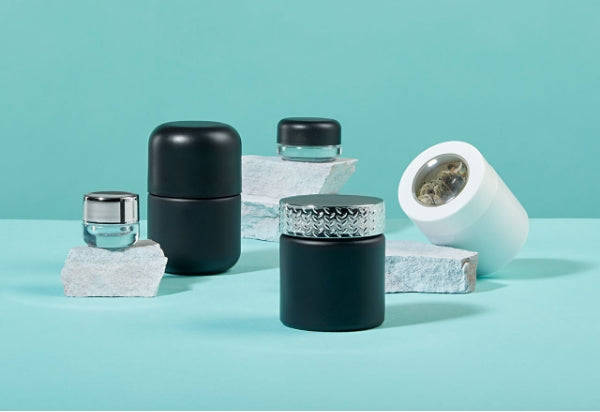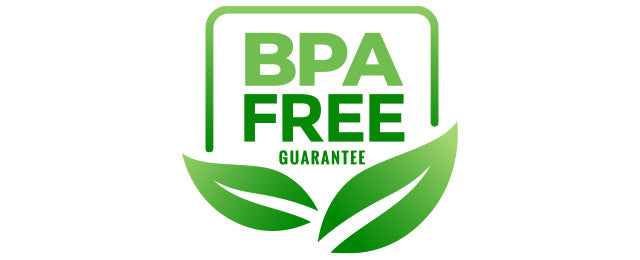Polycarbonate plastic bottles include: Plastic Baby Bottles, Nalgene® Sports Bottles and 5 Gallon Water Bottles typically found on office water coolers. Bisphenol A (BPA) is an industrial chemical used primarily to make polycarbonate plastic and epoxy resins. Polycarbonate plastic, which is clear and nearly shatter-proof, is used to make a variety of common products including baby and water bottles, sports equipment, medical devices, CDs, and household electronics. Epoxy resins are used as coatings on the inside of almost all food and beverage cans.
eBottles.com does not offer any bottles made from Polycarbonate material, our water bottles are made from PET, however this article is intended to supply general information about the safety of Polycarbonate bottles and information regarding the current BPA controversy:
On April 18, 2008 Canadian Health Minister Tony Clement announced that Canada intends to ban the import, sale, and advertising of polycarbonate baby bottles containing bisphenol A over concerns of the safety of bisphenol A. While Health Canada concluded that human exposures are less than the levels deemed to be potentially unsafe, the margin of safety was considered too low for formula-fed infants. Around the same time, Wal-Mart announced that it was immediately ceasing sales in all its Canadian stores of food containers, water and baby bottles, sippy cups, and pacifiers containing bisphenol A, and that it would phase out baby bottles made with it in U.S. stores by early 2009. Nalgene also announced it will stop using the chemical in its products, and Toys-R-Us said it too will cease selling baby bottles made from it. Subsequent news reports showed many retailers removing polycarbonate drinking products from their shelves.
The FDA maintains that bisphenol A is safe and is not recommending that people avoid using products made from it. The Consumer Product Safety Commission agrees, and its deputy director has stressed that use of bisphenol A based plastics have many practical benefits, and that "a ban could result in less effective protection of children from head, eye, or bodily injury."
A spokesman for the tin can industry has said that without lining cans with bisphenol A based resins, E. Coli and botulism poisoning would be "rampant." An industry website Bisphenol-a.org also carries a number of articles dated as recently as February 2008 claiming the use of Polycarbonate water bottles is safe.
Adverse effects of low-dose exposure on laboratory animals were first reported In 1997. Since then, its endocrine disrupting properties have been extensively investigated, and more than 100 studies have been published raising health concerns about the chemical. Early development appears to be the period of greatest sensitivity to its effects, and studies have demonstrated developmental toxicity, carcinogenic effects, and possible neurotoxicity at low doses in animal models. This is troubling because BPA was found in approximately 90% of urine samples in Americans studied. Recent studies suggest it may also be linked to obesity by triggering fat-cell activity and have confirmed that bisphenol A exposure during development has carcinogenic effects and produce precursors of breast cancer. However, neither the U.S. Environmental Protection Agency nor the International Agency for Research on Cancer have evaluated Bisphenol A for possible carcinogenic activity.
In 2007, a consensus statement by 38 experts on bisphenol A concluded that average levels in people are above those that cause harm to animals in laboratory experiments, and a panel convened by the U.S. National Institutes of Health determined that there was "some concern" about BPA's effects on fetal and infant brain development and behavior. A 2008 draft report by the U.S. National Toxicology Program (NTP) agreed with the panel, concluding that "there is some concern for neural and behavioral effects in fetuses, infants, and children at current human exposures," and that there is "some concern for bisphenol A exposure in these populations based on effects in the prostate gland, mammary gland, and an earlier age for puberty in females." The NTP also concluded that there is negligible concern that "exposure of pregnant women to bisphenol A will result in fetal or neonatal mortality, birth defects or reduced birth weight and growth in their offspring" or that it causes adverse effects in exposed adults.
In April 2008, the Health Canada released its Draft Screening Assessment for bisphenol A, which concluded that the chemical may pose some risk to infants and proposed classifying the chemical as "'toxic' to human health and the environment." This action follows Canadian regulators selection of bisphenol A in 2006 as one of 200 substances deserving of thorough safety assessments because preliminary studies had found it to be "inherently toxic"; the chemical had not previously been studied by them in depth, having been accepted under grandfather clauses when stricter regulations were passed in the 1980s.
In contrast to the recent actions in North America, in January 2006 the German Federal Institute for Risk Assessment announced that polycarbonate baby bottles are safe and stated that published research on the health effects of Bisphenol A is "difficult to interpret and is occasionally contradictory". An assessment released later that year by the European Union's Food Safety Authority reached a similar conclusion, expressing "considerable reservations" about the biological significance and robustness of the low-dose exposure studies on rodents. In 2007 Japan also concluded that for individuals in that country, "the current exposure levels of BPA will not pose any unacceptable risk to human health that a ban is not needed."
Some toxicologists and regulatory agencies have criticized low-dose toxicity studies, especially those that involved injecting bisphenol A directly into animals, since human exposures typically involve ingestion and subsequent metabolism in the liver, and the experimental design of a few of these early studies has also been questioned. On the other hand, studies have also appeared pointing out flaws in chemical industry funded studies that found no evidence of adverse effects from low dose exposure, and a study from 2008 concluded that blood levels of bisphenol A in neonatal mice are the same whether it is injected or ingested.

